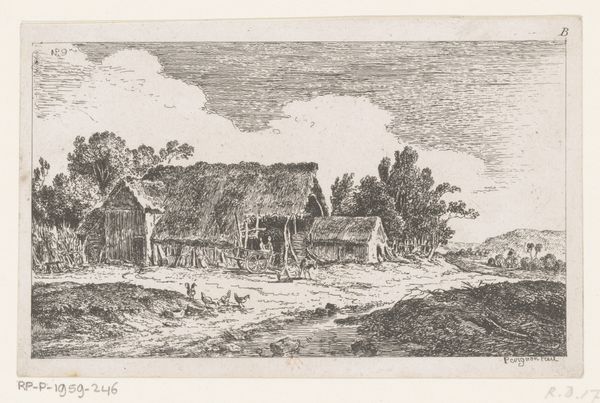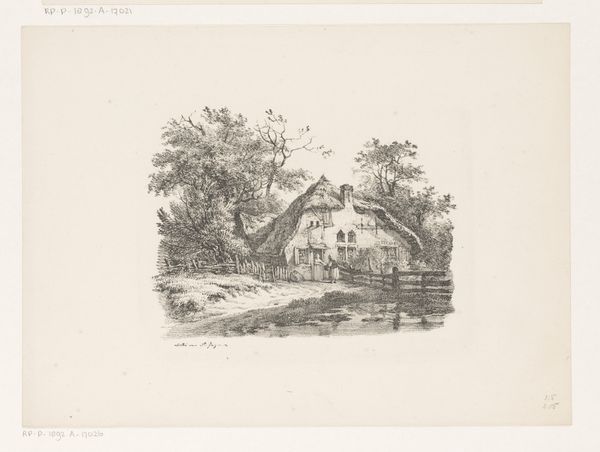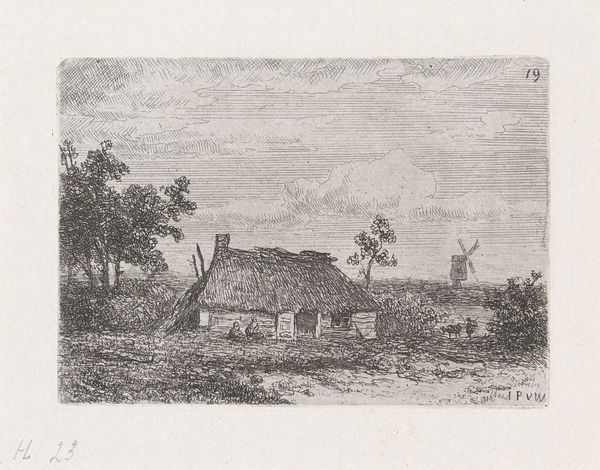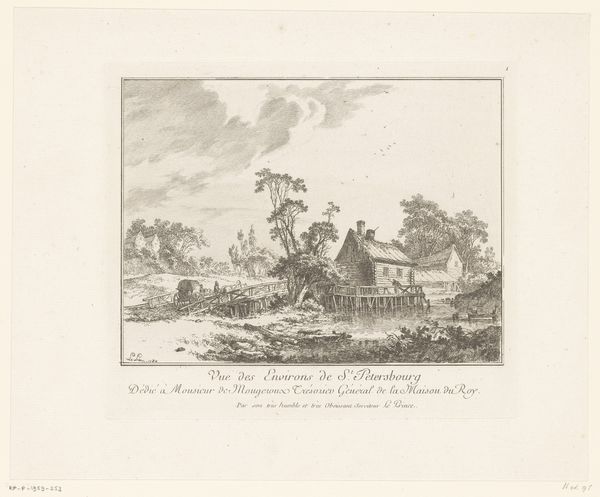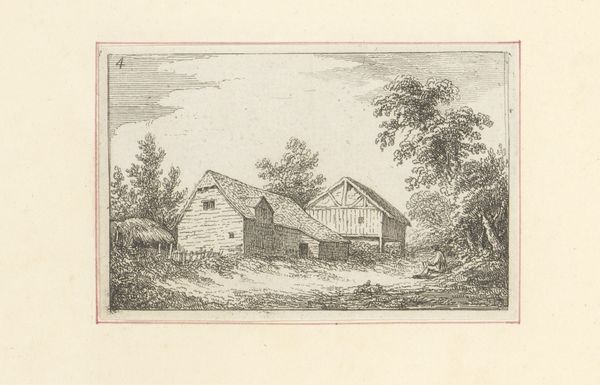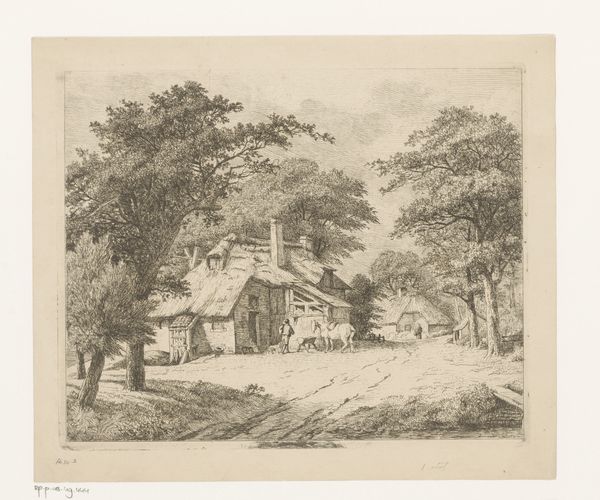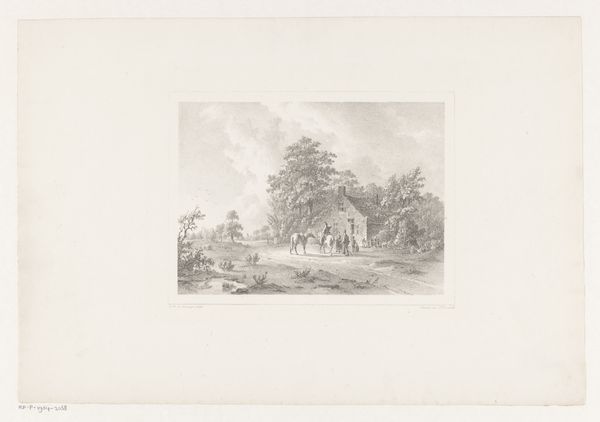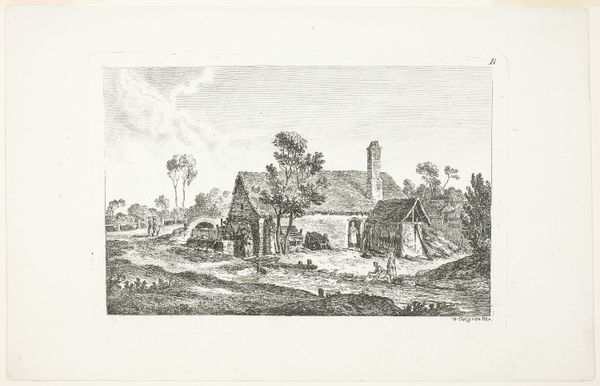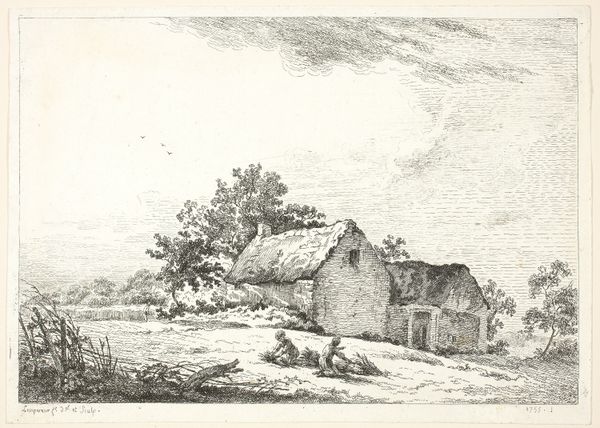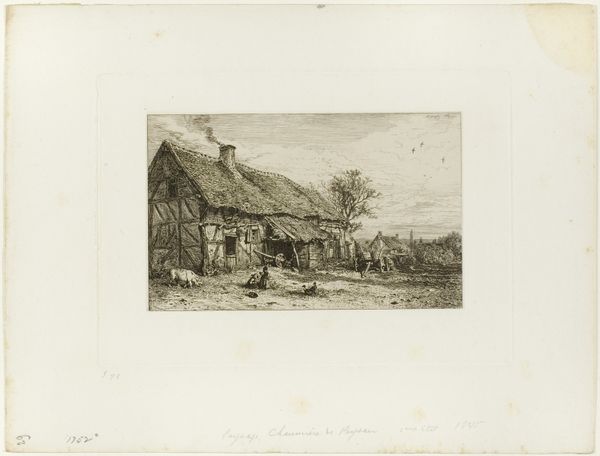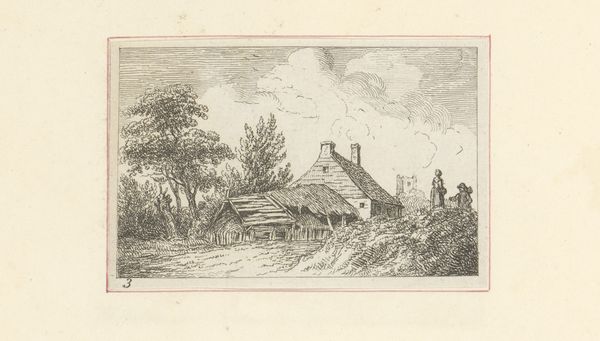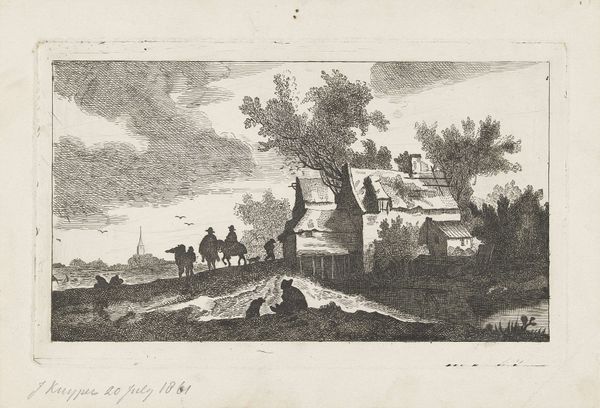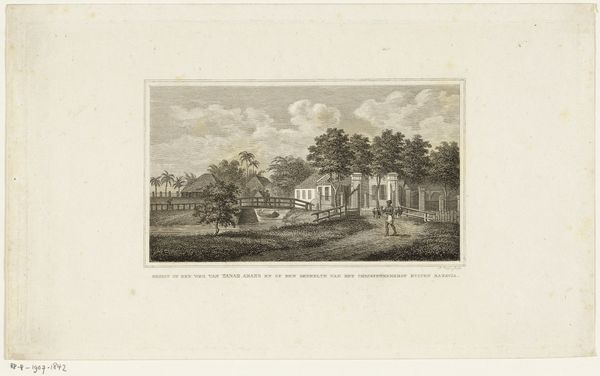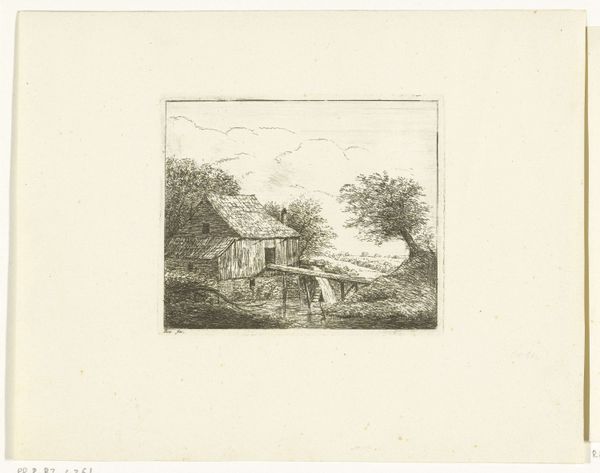
Dimensions: height 192 mm, width 222 mm
Copyright: Rijks Museum: Open Domain
Curator: Standing before us is "View of a House Near St. Petersburg," a print etched by Jean-Baptiste Leprince in 1764. It's a quaint scene, isn't it? Editor: My first thought? Rustic and somewhat melancholic. The thatched roof cottage feels both charming and a bit…isolated. There's a group of people gathered in front of the house that suggests that’s not quite the case though, a sort of grounded reality amongst the muted tones of the scene. Curator: I think Leprince captured something quite genuine in its depiction of everyday life in 18th-century Russia. Note the attention to the texture of the wood in the cottage walls. And that impressive haystack! Editor: Right, Leprince, trained as a rococo painter, turns to more modest themes here. In 1764, Catherine the Great ruled with an iron fist, consolidating power. Is this bucolic scene a deliberate retreat, a romanticization of the peasantry under autocratic rule? Does that haystack represents wealth? Is this a message in plain sight? Curator: I appreciate your read, but I also see an artist exploring a genre of paintings that found appeal with nobility! He's offering a glimpse into rural life. Perhaps there’s less a social message in its portrayal, and a desire for a change of pace, like a palate cleanser? A quiet escape? Editor: Maybe a bit of both, no? Art reflects and refracts, challenging the viewers to read between the lines. The composition, though seemingly simple, invites complex readings. Like, look at the slight curve of the body of water as well as the use of dark shadows as counterpoints to the brighter sky to build an emotional tone… What feelings does the artist hope to awaken in us, and for whom? Curator: An important point, it’s true, that the experience would resonate differently then compared to now. For me, as I stand here, the print conjures a sense of tranquility, a momentary pause away from the grand palaces of the era, but for them it could’ve represented the ultimate display of beauty, an aesthetic representation that they idealized about a people they looked down upon. The scale of the house could easily signal that in their mind. Editor: Ultimately, Leprince gives us more than just a pretty landscape; he presents us a moment pregnant with layered perspectives and a complex social reality we must confront head on. Curator: A sentiment that’s as valid today as it was in 1764. Food for thought, certainly. Thank you.
Comments
No comments
Be the first to comment and join the conversation on the ultimate creative platform.
